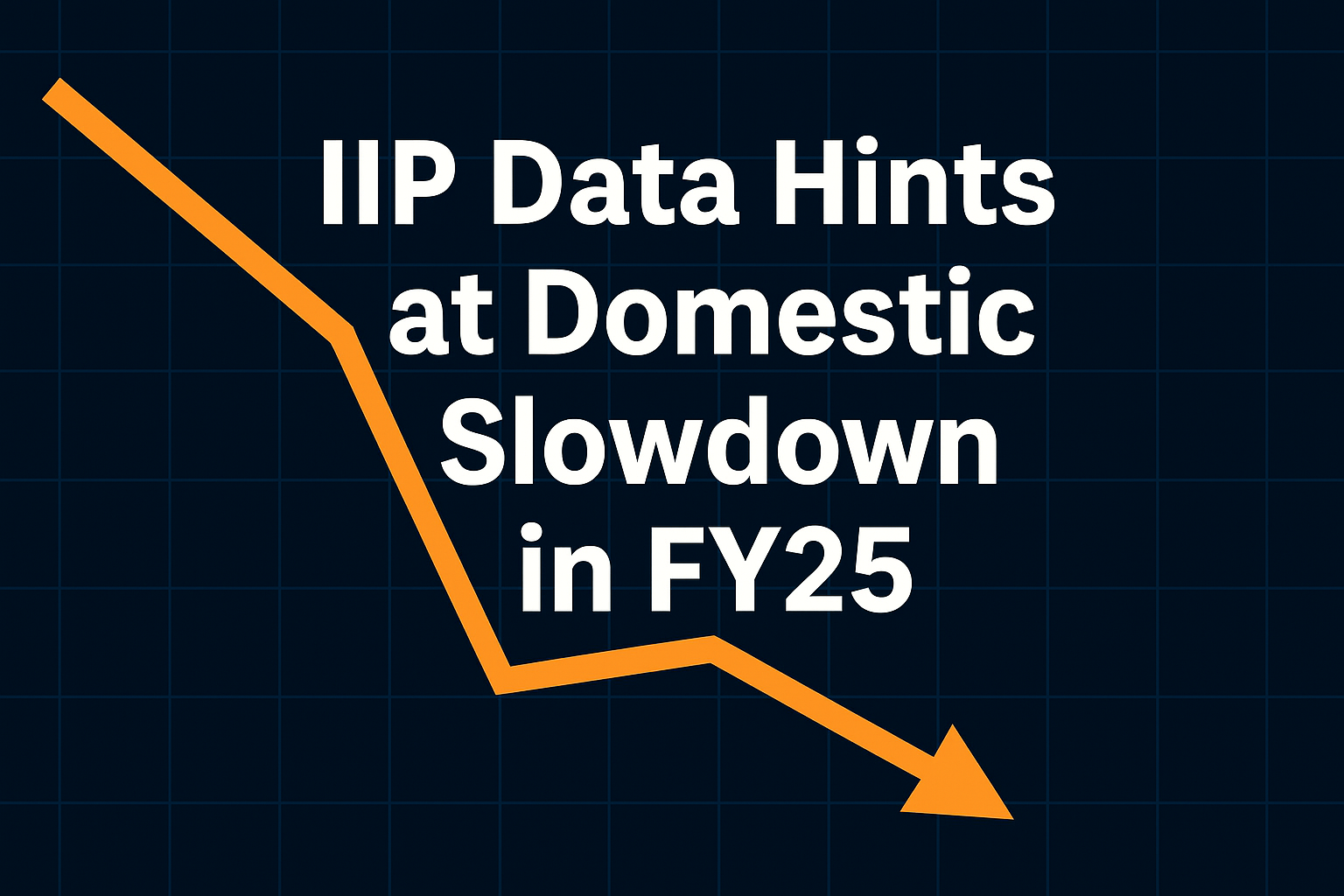Announcement: Lorem ipsum dolor sit amet, consectetur adipiscing elit. Donec et quam blandit odio sodales pharetra.
IIP Data Shows Slowdown Shifting from Global to Domestic Drivers
India’s latest IIP numbers reveal a clear shift in the growth narrative. While export-linked sectors like apparel and electronics bounce back, domestic demand appears to be losing steam. Explore what this means for India’s economic momentum and policy direction.

Table of Content
IIP data points to slowdown shifting from global to domestic
On January 10, 2024, the MOSPI announced the index of industrial production (IIP) growth for November 2024 (IIP is with 1-month lag). The November IIP growth at 5.17% was better than expected, but that was more due to base effect. What is material is that the 3 components of Annual IIP; mining, manufacturing, and electricity are all down yoy.
| Product Basket | 2022-23 | 2023-24 | 2024-25# |
| Manufacture of furniture | 16.4 | -5.5 | 27.3 |
| Manufacture of electrical equipment | -4.2 | 7.5 | 22.6 |
| Manufacture of other transport equipment | 11.6 | 13.9 | 14.4 |
| Manufacture of computer, electronic and optical | -6.4 | -11.3 | 8.3 |
| Manufacture of wearing apparel | -7.4 | -14.1 | 7.8 |
| Manufacture of pharmaceuticals | -2.4 | 8.0 | 0.0 |
| Manufacture of leather and related products | -5.8 | -1.0 | -1.4 |
| Manufacture of food products | 3.8 | 1.6 | -1.7 |
| Printing and reproduction of recorded media | 23.4 | -1.4 | -5.2 |
| Other manufacturing | -3.0 | -6.2 | -6.5 |
| MINING | 5.8 | 7.5 | 3.3 |
| MANUFACTURING | 4.7 | 5.5 | 4.1 |
| ELECTRICITY | 8.9 | 7.1 | 5.3 |
| OVERALL IIP | 5.2 | 5.9 | 4.1 |
Data Source: MOSPI (# – 9 months data)
Let us break up the above table into two parts, the first is the overall IIP numbers split into mining, manufacturing, and electricity. Barring electricity, the typical trend is that growth peaked in FY24 before tapering in FY25. This can be attributed to a mix of factors like weak demand, lower growth in government capex, higher levels of inflation etc. We have not included FY22, as the recovery from the pandemic distorted the growth.
However, more interesting is the mix of products. Let us look at FY25. The products that are showing the best growth in IIP are furniture, electrical equipment, transport, computer products, and wearing apparel. What are the products that are lagging in FY25? You have printing, food products, leather products, and pharma lagging behind.
Did You See The Subtle Shift From Global To Domestic?
However, the real story in the above data is something entirely different. Let us compare the leaders and laggards in terms of product IIP in FY25, FY24, and FY23. Furniture, computer products, and wearing apparel are among the leaders in FY25, but they were the laggards in FY24. The trend in FY23 was approximately similar to FY24. The story is that exports that were the slowdown story of FY23 and FY24, have become the growth story; while the real pressure on IIP is coming from domestic production. It looks like domestic demand has taken a hit in FY25; which is where fiscal policy must focus on!
Comments